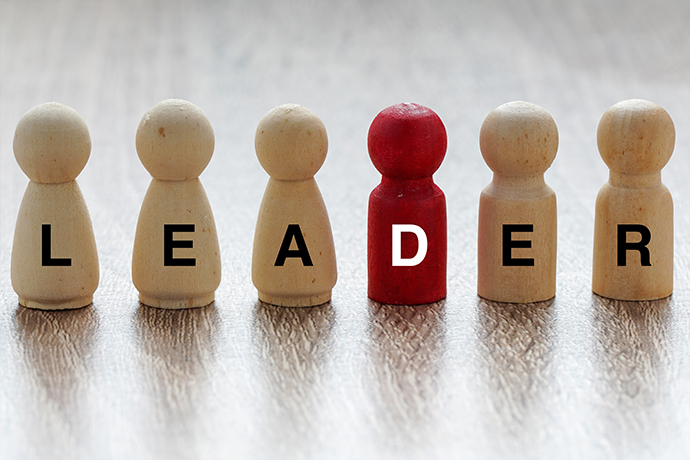 SPEAKERS
SPEAKERS
Explore the three levels of leadership and how they drive effective leadership in dynamic business environments. Enhance your leadership skills today!

Leadership is amazing and far beyond just management or authority. However, it cannot be attained except through obtaining and working out of the various levels of the concept, which all add up to differing skills, views, and responsibilities. The three levels of the leadership model provide an approach to the easy development of leadership competencies by focusing on personal, team, and organizational dynamics. In this article, we shall delve into these three levels and understand how they make a contribution toward effective leadership in both personal and professional areas.
Personal leadership is concerned with developing the basic level area of three areas of interest in personal leadership, which is about developing self-awareness and self-management practices to be believed to be necessary for a good leader. An individual in this area would need to know what he or she values above all and would need to understand his or her strengths and weaknesses. It is through the practice of effective self-awareness that leaders are empowered to make informed choices about what to do based on what they stand for and their ethics. Only through acting with such integrity from an authentic place will leaders gain the trust and respect they deserve among the people they are leading.
The continuous self-improvement process is the second critical aspect of personal leadership in the three-level leadership approach. Leadership requires personal and professional growth and learning daily. Being open to feedback and reflecting on experiences is piggybacked with an earnest pursuit of learning opportunities. Great leaders always adapt and remain effective in facing new challenges by improving skills and growing more deeply rooted knowledge. This lies at the core of what sets good leaders apart from average ones.
It is also a critical element within the 3 levels of leadership framework, which addresses personal leadership: emotional intelligence. Leaders should have the capability to manage their emotions and be sensitive to the emotional demands of others as well. Leaders who show they can relate emotionally and can sympathize with people correctly can bring about lasting relations and long-term good work relations. Emotional intelligence also enables leaders to flow harmoniously amidst conflicts and upheavals. It keeps one poised and engenders a culture of cooperation and respect. It is through mastering personal leadership that one sets the foundation for the higher levels of leadership, including the team and organizational levels of leadership.

The second level in the three levels of leadership model is team leadership. Team leadership is a more complex level compared to the bottom levels. Leaders transition from the grassroots of self-management to helping employees manage their mutual goals. It requires some understanding of team dynamics as well as the skills and ability to induce collaboration and harmony among team members. The leader should structure expectations for the team in creating an atmosphere where every team member feels valued, stimulated, and motivated to put in his best efforts, fosters open communication, and uses individuals' strengths to actualize the objectives of the team.
A critical area of team leadership within the three levels is to offer motivation and inspiration to the team members. A leader should practice the values and behaviors that he or she wants members of his or her team to have. From morale to performance, constructive feedback and constructive recognition of achievements at both the individual and collective levels essentially drive the force of a leader's inspiration. Good team leaders are able to resolve any conflicts that may arise and ensure that concerns are handled in an expedient, fair, and appropriate manner so that people can continue to work in unity. This, leadership speakers say, is largely how team members want to prevail.
Regarding the three levels of leadership, team leadership also involves the empowerment of individuals to be responsible for their duties and accountabilities. Such empowerment promotes responsibility and even motivates creativity. The leaders have to delegate work in the right manner and also grant members of the group the required resources and support or even the needed space where they have a free hand in the decision-making process. In this way, the leaders can not only develop the overall performance of the team but can even develop growth and productivity among the individuals. Team leadership is, therefore, an important skill for mastering to expand into broader, organizational context-focused next levels of leadership.

Organizational leadership is the highest level in the three levels of leadership model. It embodies the skills and responsibilities relating to the leading of the whole organization. The leaders at this level have to be able to provide a strategic vision for the organization that is consistent with the mission and values. These leaders are called upon to formulate long-term goals and plans for how to achieve them -thus setting everything in line from every department and team toward a common goal. Such strategic oversight can only be attained through an in-depth knowledge of the organization's strengths, weaknesses, opportunities, and threats. This helps the leaders to make appropriate decisions that ensure growth and sustainability.
Organizational leadership in the three levels of leadership requires the ability to handle complex settings and approach change effectively. Great leaders ought to develop overlapping skills in scanning the environment -both internal and external- to obtain information on market trends, economic shifts, and technological changes that may affect the organization. They must create a culture that is innovative and nimble, wherein people would welcome change and be thirsty for incremental improvements in processes and products. This level of leadership also demands very good communication skills in expressing the organizational vision and strategy clearly enough so that each member of the workforce grasps his or her contributing role to the overall objectives.
Leaders at the 3 levels of leadership must also, therefore, be able to create great organizational cultures and sustain them. They have to instill the correct series of values of honesty, teamwork, and equality giving an environment for the employees to feel engaged and motivated toward work. Pay special attention to managers next in line, to enhance their capabilities through learning and mentoring opportunities. With the help of organizational leadership, organizational leaders can apply a supportive and positive cultural environment in the work pattern. This would maximize the satisfaction of employees, reduce turnovers, and increase the general performance in the workspace. Organizational leadership is a mastery skill through which any organization successfully withstands the purpose of long-term success and becomes resilient in a dynamic business environment.
Mastery of the three levels of leadership -personal, team, and organizational- is a rigorous criterion for anyone who wants to perform the role of a leader in an effective manner in any kind of dynamic business environment today. Personal leadership establishes the foundation of individual self-awareness and unwavering self-improvement. Team leadership builds to this with more intensity in the area of collaboration and motivation of a group, and then organizational leadership takes it yet another level higher into strategic vision and culture development. At all times, the leader—the one who masters them all propels his house toward sustainable success, envisions his teams committing remarkable feats, and positively impacting the business landscape as well. Engaging in these principles will help not only individualistic leadership capacities but also contribute to the overall flourishing and resilience of the organizations one leads.
